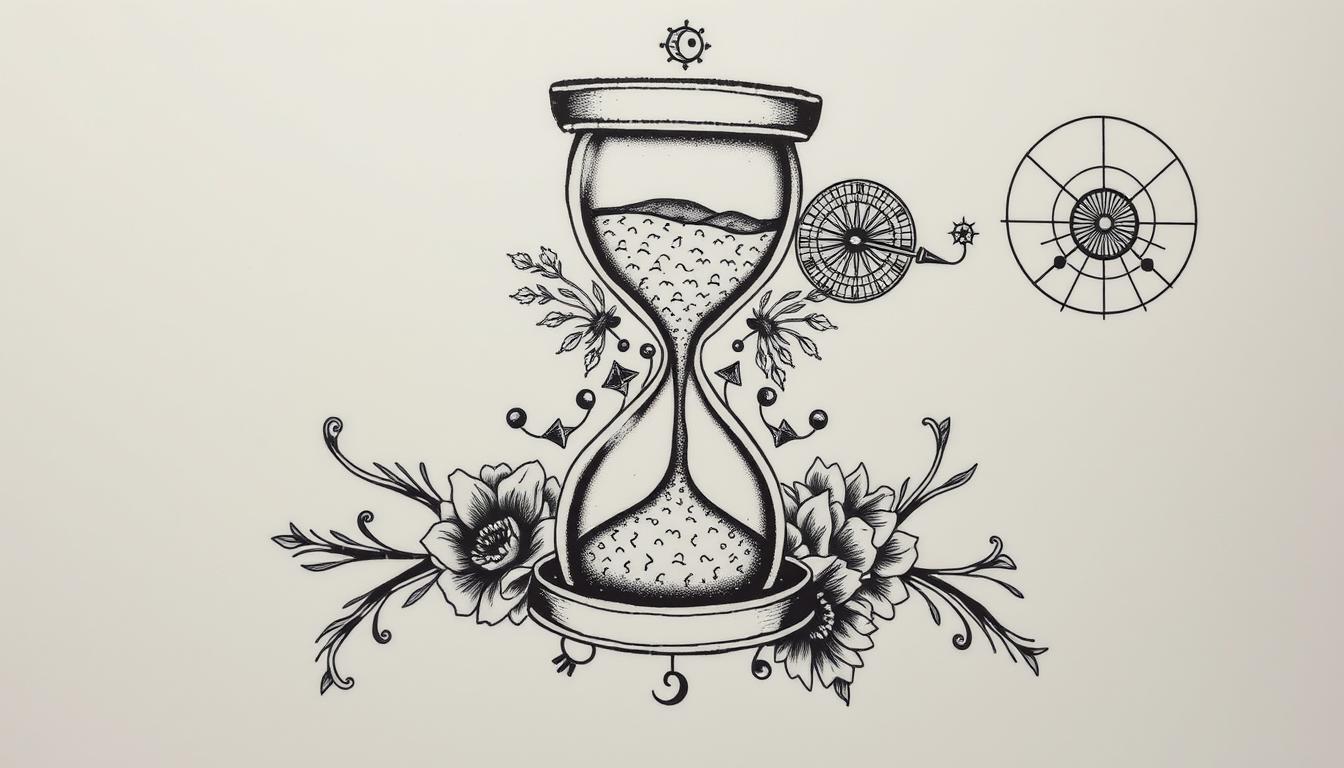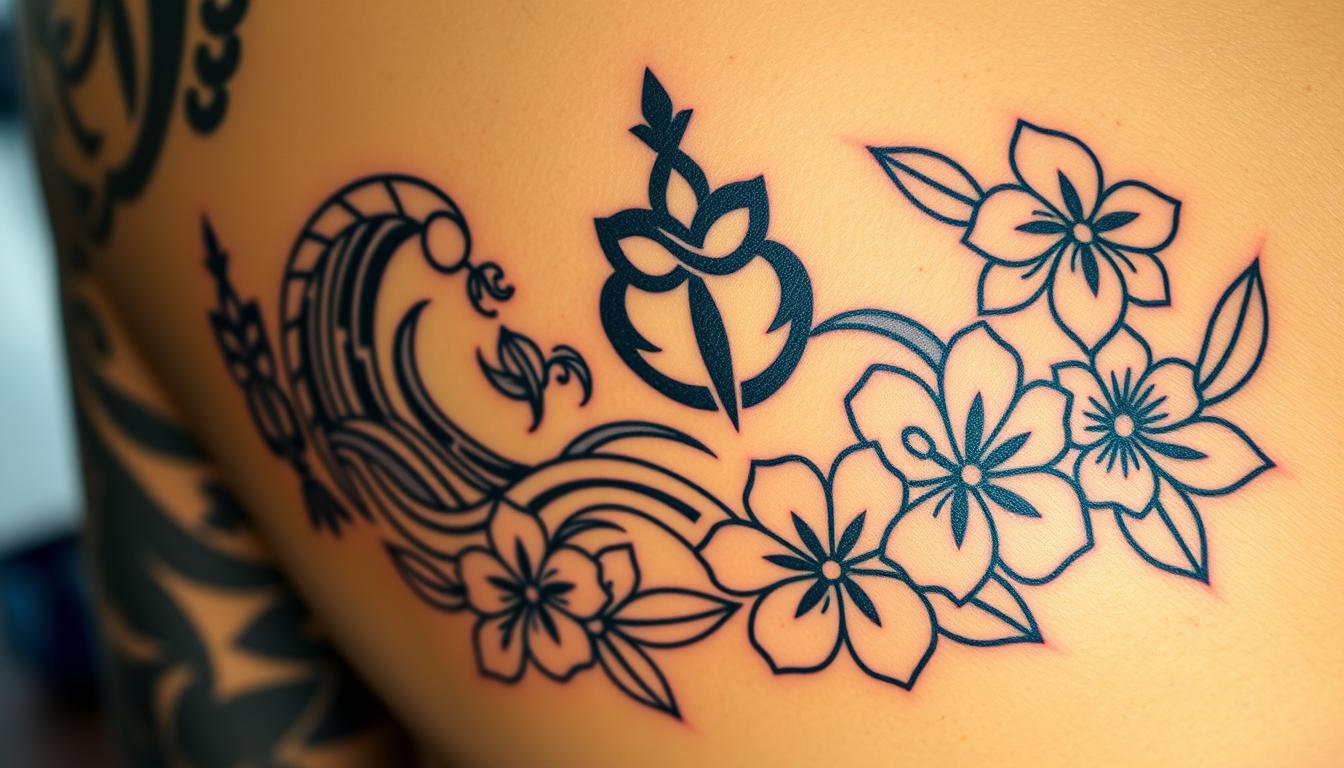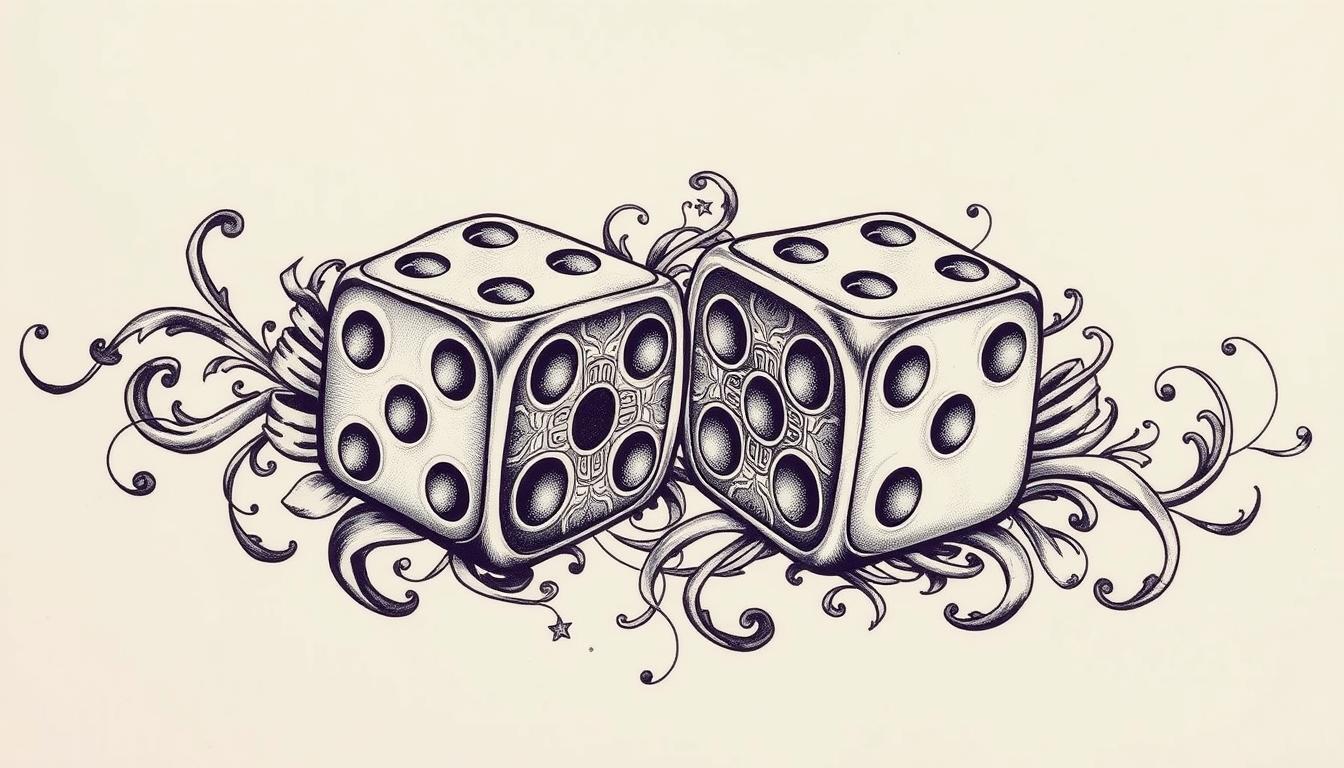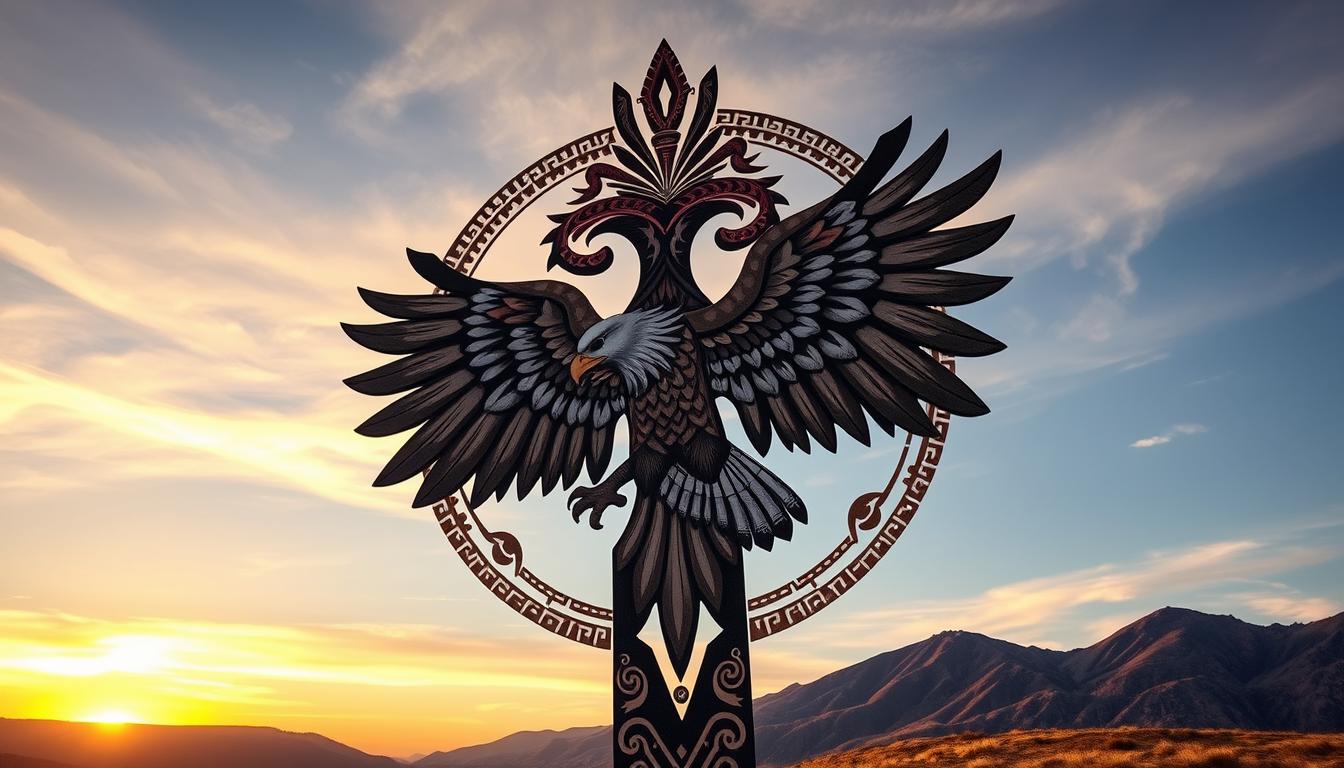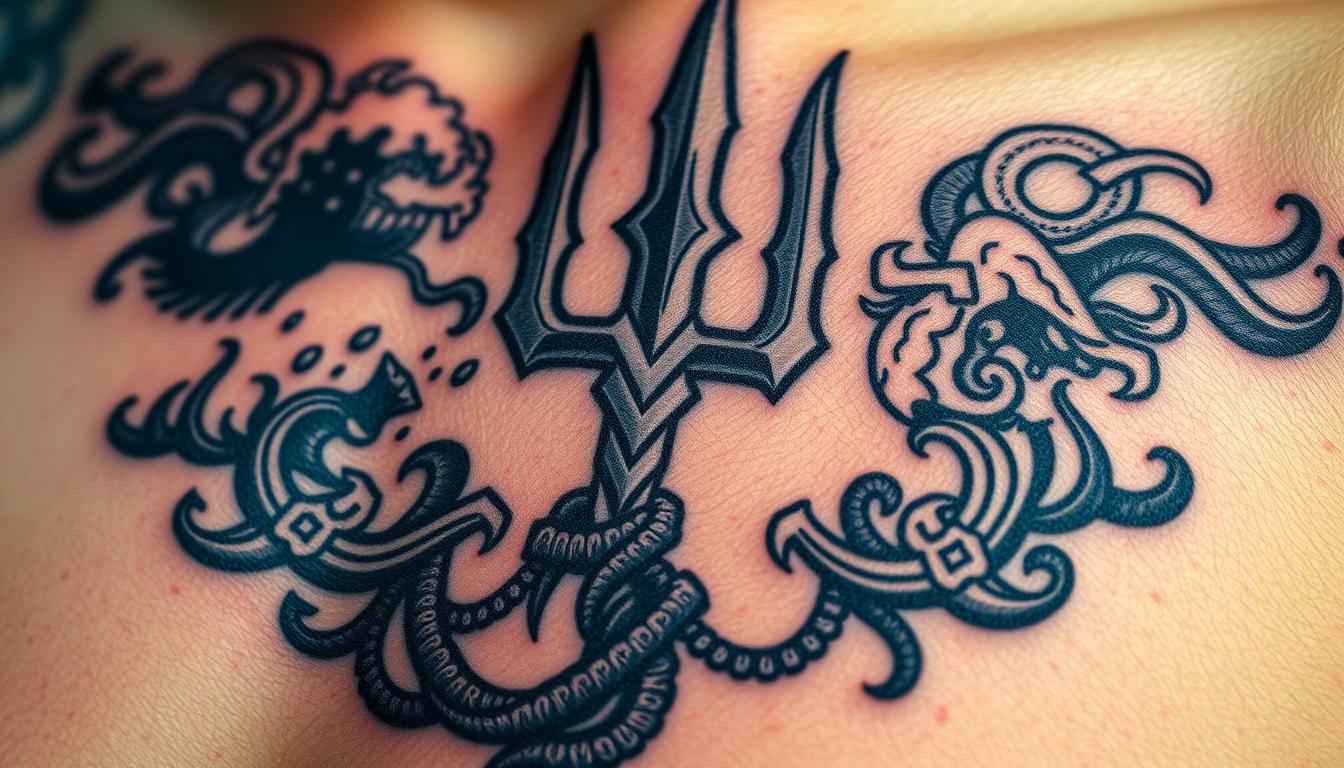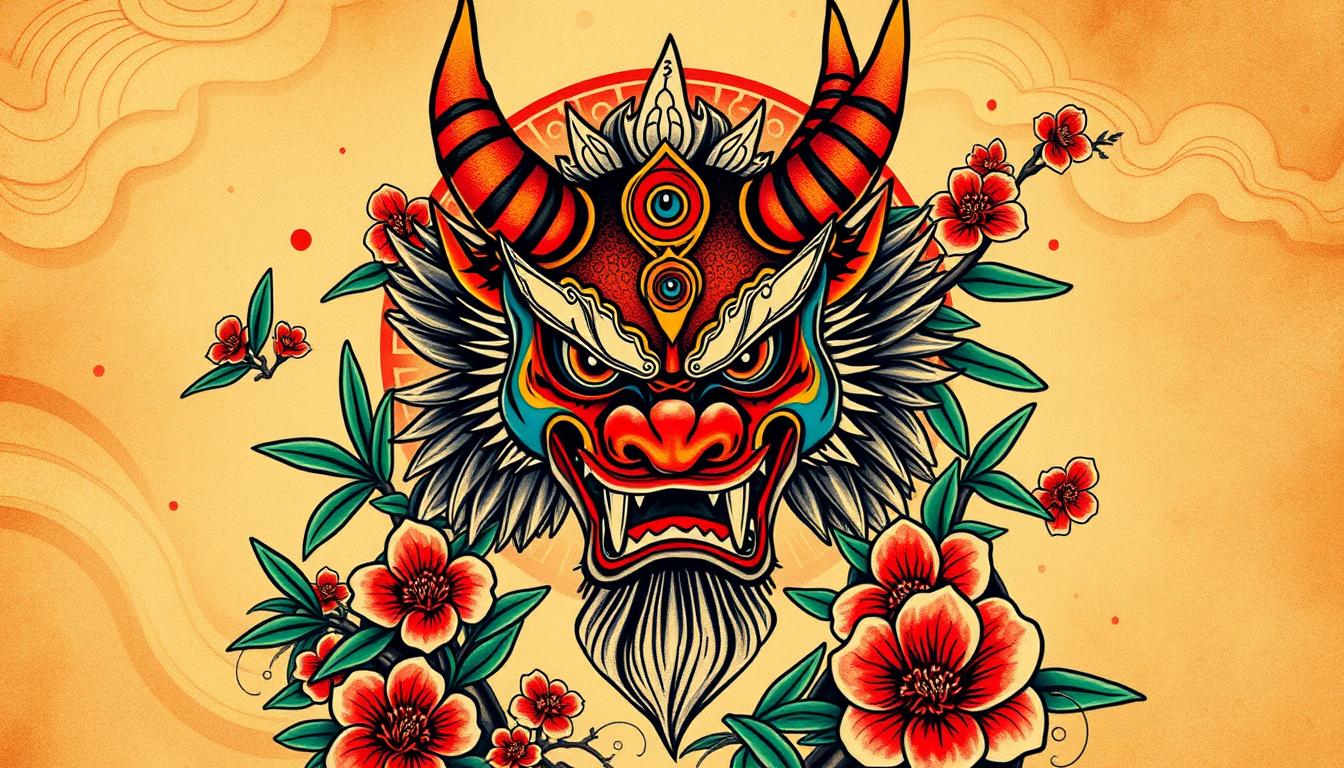Compass tattoos have long been a popular choice for those seeking meaningful body art. But what lies beneath the surface of these directional designs? From ancient seafaring traditions to personal journeys of self-discovery, compass tattoos hold a wealth of symbolism. This article explores the historical significance, cultural interpretations, and personal meanings behind compass tattoos. We’ll also delve into popular designs, including those incorporating butterflies, skulls, and religious elements. By the end, you’ll have a clear understanding of the deep symbolism behind compass tattoos and be better equipped to choose a design that resonates with your own desires and life direction.
Key Takeaways
- Compass tattoos symbolize direction, personal growth, and cultural significance across diverse civilizations
- Designs range from traditional to modern, incorporating various elements to reflect individual meanings
- Placement and design choice are crucial for creating meaningful and visually appealing compass tattoos
- Modern trends blend traditional symbolism with contemporary aesthetics, influenced by media and pop culture
- Personal stories often inspire unique compass tattoo designs, commemorating significant life events and journeys
The Historical Significance of Compass Symbols

The compass, a vital navigational tool, has played a significant role in maritime history and ancient civilizations. Its symbolism extends beyond mere direction-finding, representing personal development and faith. From the equator to the poles, the compass has guided sailors, including the boatswain, and inspired art forms. This section explores the compass’s origins, maritime significance, and cultural importance across civilizations.
Origins of the Compass as a Navigational Tool
The compass, a fundamental navigational tool, originated in ancient China during the Han Dynasty around 206 BCE. Initially used for geomancy and feng shui, it evolved into a crucial instrument for maritime navigation, guiding sailors across vast oceans. The design of early compasses incorporated natural magnetite, often shaped like a spoon or ladle, which would align with Earth’s magnetic field when floating in water. This innovation revolutionized seafaring, allowing explorers to venture further into uncharted waters and bringing good luck to those who mastered its use.
Symbolism in Maritime History
In maritime history, the compass symbol represented more than just direction; it embodied the spirit of exploration and the connection between sailors and the universe. The compass rose, often adorned with vibrant colors, became a powerful emblem of navigation and cultural exchange. This symbol transcended gender, incorporating elements of both masculinity and femininity, and served as a testament to the loyalty of seafarers to their craft. Across various cultures, the compass symbol evolved to reflect local traditions while maintaining its core significance in maritime endeavors.
The Compass in Ancient Civilizations
Ancient civilizations embraced the compass as a symbol of wisdom and guidance. The Egyptians associated it with the phoenix, representing rebirth and direction. In Greek culture, the compass rose symbolized the four winds, while Native American tribes used arrow symbols for navigation. The concept of consent in decision-making was often linked to compass imagery, emphasizing the importance of choosing one’s path. These diverse interpretations highlight the universal significance of the compass across cultures:
- Egyptian: Phoenix-compass connection for rebirth and direction
- Greek: Compass rose representing the four winds
- Native American: Arrow symbols for navigation
- Various cultures: Compass as a symbol of consent in decision-making
Cultural Interpretations of Compass Tattoos
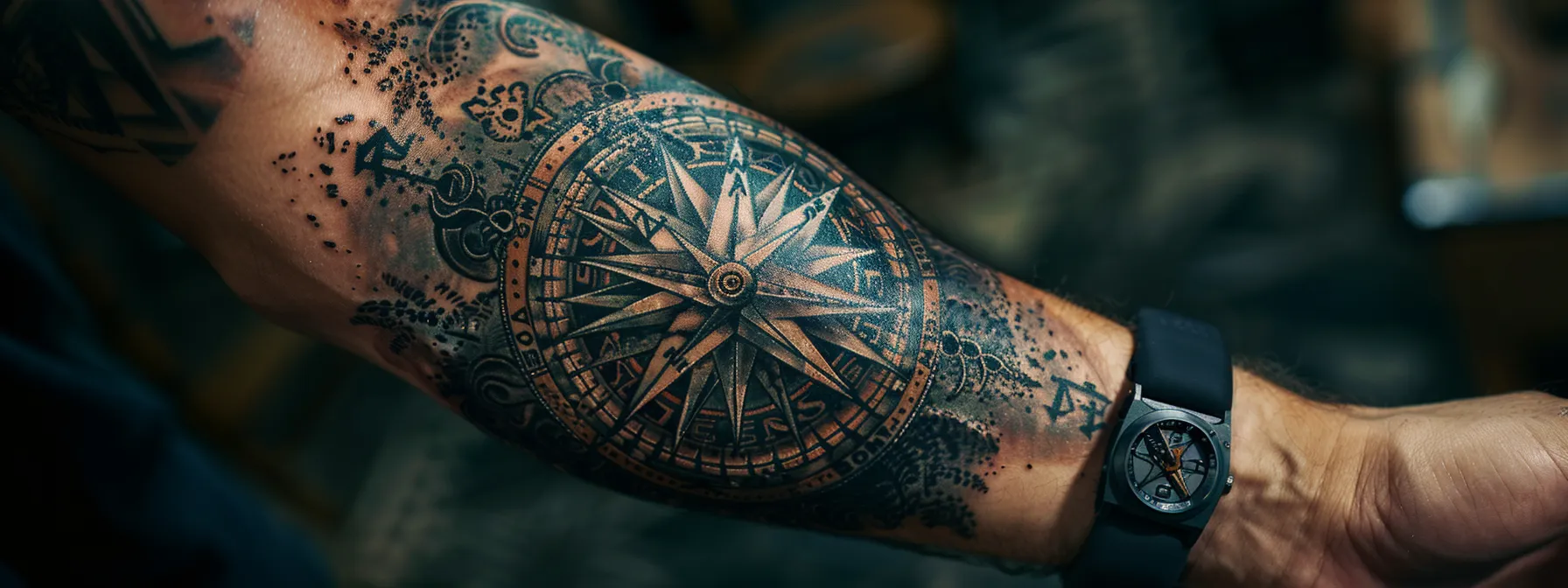
Compass tattoos hold diverse cultural meanings across Eastern, Western, and Indigenous traditions. These tattoo symbols, often adorning the arm, incorporate elements like rigging and the protective hamsa. Eastern philosophies view compasses as guides for spiritual journeys, while Western interpretations focus on direction and purpose. Indigenous perspectives often connect compass imagery to nature and ancestral wisdom.
Meanings in Eastern Traditions
In Eastern traditions, compass tattoos symbolize spiritual guidance and balance. Hinduism incorporates the compass symbol into mandalas, representing the universe’s cyclical nature and the journey towards enlightenment. Some Eastern cultures associate compass patterns with sharks, viewing these creatures as spiritual guides in life’s turbulent waters. The compass serves as a powerful emblem of finding one’s path amidst life’s challenges, reflecting the Eastern philosophy of inner harmony and self-discovery.
Western Perspectives on Compass Symbolism
In Western cultures, compass tattoos often symbolize direction, purpose, and adventure. Sailors have long embraced these designs, incorporating them into traditional maritime tattoos alongside anchors and dragons. The beauty of compass ink lies in its versatility, representing both physical journeys and personal growth. Modern interpretations often blend classic sailor tattoos with contemporary elements, reflecting the enduring appeal of this symbol in Western society.
Indigenous Views on Compass Imagery
Indigenous cultures view compass imagery through a lens of spirituality and connection to nature. Tattoo artists often incorporate elements like the moon and celestial bodies into compass designs, reflecting the importance of these natural guides in indigenous navigation. In Buddhism and other spiritual traditions, compass symbols represent the journey towards enlightenment, with each direction holding significance in the path to inner peace. The aesthetics of indigenous compass tattoos typically blend natural elements with geometric patterns, creating a visual representation of the interconnectedness between humans and their environment. These tattoos serve as powerful reminders of ancestral wisdom and the importance of staying grounded in one’s cultural roots:
- Moon and celestial bodies as natural guides
- Spiritual significance of cardinal directions
- Blending of natural elements and geometric patterns
- Representation of ancestral wisdom
- Connection between humans and the environment
Personal Meanings Associated With Compass Tattoos

Compass tattoos hold profound personal meanings, symbolizing life’s journey, direction, protection, and adventure. These designs often incorporate elements like rope, birds, ships, and various shapes, reflecting individual experiences and beliefs. From navigating life’s challenges to representing Christian faith, compass tattoos serve as powerful reminders of one’s path and purpose.
Navigating Life’s Journey
Compass tattoos serve as powerful symbols for navigating life’s journey, often incorporating elements like the mandala or vegvísir to represent personal growth and direction. These designs, frequently adorning the forearm, remind the wearer of their role as the navigator of their own destiny. For many, the compass tattoo embodies the dream of finding one’s true path, serving as a constant guide through life’s challenges and opportunities.
Seeking Direction and Purpose
Compass tattoos symbolize the quest for direction and purpose in life, often incorporating elements like trees, owls, and angels to represent wisdom, courage, and guidance. These designs, etched permanently on the skin, serve as constant reminders of one’s personal journey and the importance of staying true to one’s path. For many individuals, a compass tattoo embodies the courage to face life’s challenges head-on, with the symbolic owl representing wisdom in decision-making and the tree signifying growth and stability.
Representing Protection and Guidance
Compass tattoos symbolize protection and guidance, drawing inspiration from diverse cultural elements. In Hawaii, these designs often incorporate hula dancers or feathers, representing the islands’ navigational heritage. Sailors historically tattooed compasses on their bodies as a mythical safeguard against the dangers of the sea, believing it would guide them safely back to shore. The mast of a ship, when combined with a compass in tattoo designs, further emphasizes the idea of steadfast direction and protection during life’s journeys.
Symbolizing Adventure and Travel
Compass tattoos embody the spirit of adventure and wanderlust, often incorporating elements like the nautical star or realistic landscapes to symbolize a love for travel. The compass motif represents a desire to explore new horizons and embrace life’s journeys. These tattoos serve as a constant reminder of the wearer’s passion for discovery, whether it’s exploring new cultures, embarking on personal adventures, or seeking new experiences. The combination of compass imagery with other travel-related elements creates a powerful symbol of the wanderer’s spirit:
| Element | Symbolism |
|---|---|
| Compass | Direction and guidance |
| Nautical star | Navigation and finding one’s way |
| Realistic landscapes | Desire to explore diverse environments |
| Travel-related imagery | Passion for new experiences |
Popular Compass Tattoo Designs and Their Meanings
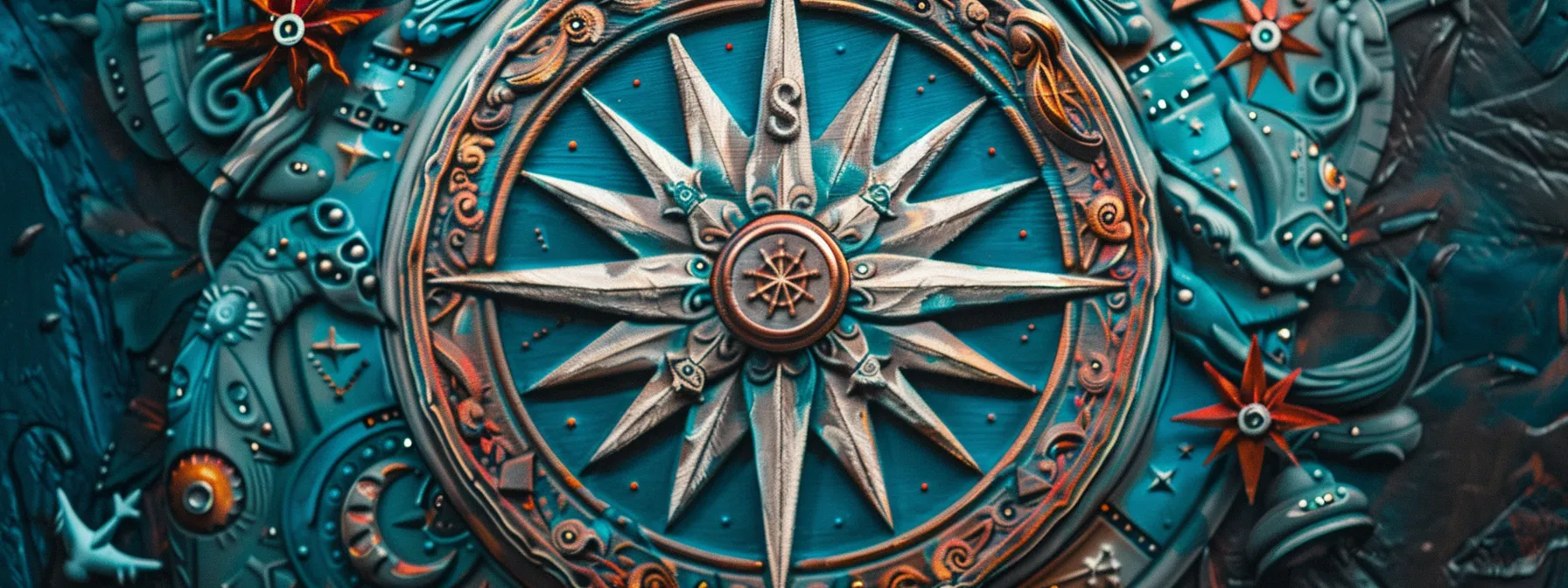
Compass tattoo designs offer diverse symbolism and artistic styles. Traditional compass rose designs represent navigation and direction. Nautical elements like fish and constellations enhance maritime themes. Minimalist and detailed designs cater to different aesthetic preferences. Personalized compass tattoos incorporate unique elements, reflecting individual journeys and aspirations.
Traditional Compass Rose Designs
Traditional compass rose designs remain a popular choice for tattoo enthusiasts seeking a classic maritime aesthetic. These intricate patterns typically feature eight or sixteen points, representing cardinal and intercardinal directions. The compass rose often incorporates ornate details such as fleur-de-lis symbols or stylized wind roses, adding depth and visual interest to the design. Many tattoo artists blend traditional elements with modern techniques, creating unique interpretations that honor the rich history of nautical tattoos while appealing to contemporary tastes.
Combining Compass With Nautical Elements
Compass tattoos often incorporate nautical elements to enhance their maritime significance. Artists frequently combine compass designs with anchors, ships, or waves, creating visually appealing compositions that symbolize stability, journey, and the sea’s power. These hybrid designs appeal to those with a strong connection to the ocean or maritime heritage, offering a rich tapestry of symbolism that reflects both direction and seafaring traditions.
Minimalist vs. Detailed Designs
Compass tattoo designs range from minimalist to highly detailed, catering to diverse aesthetic preferences. Minimalist designs feature clean lines and simple shapes, emphasizing the essential elements of the compass. Detailed designs incorporate intricate patterns, shading, and additional elements like maps or landscapes. Both styles offer unique advantages: minimalist designs provide clarity and versatility, while detailed designs allow for more personalization and storytelling. The choice between these styles often depends on the wearer’s personal taste and the tattoo’s intended symbolism:
| Design Style | Characteristics | Advantages |
|---|---|---|
| Minimalist | Clean lines, simple shapes | Clarity, versatility |
| Detailed | Intricate patterns, shading, additional elements | Personalization, storytelling |
Personalized Compass Tattoos
Personalized compass tattoos offer individuals the opportunity to create unique designs that reflect their personal journeys and aspirations. These customized tattoos often incorporate meaningful elements such as birthdays, initials, or significant coordinates alongside the compass motif. Artists work closely with clients to develop designs that blend personal symbolism with traditional compass imagery, resulting in deeply meaningful and visually striking tattoos.
Choosing the Right Compass Tattoo for You
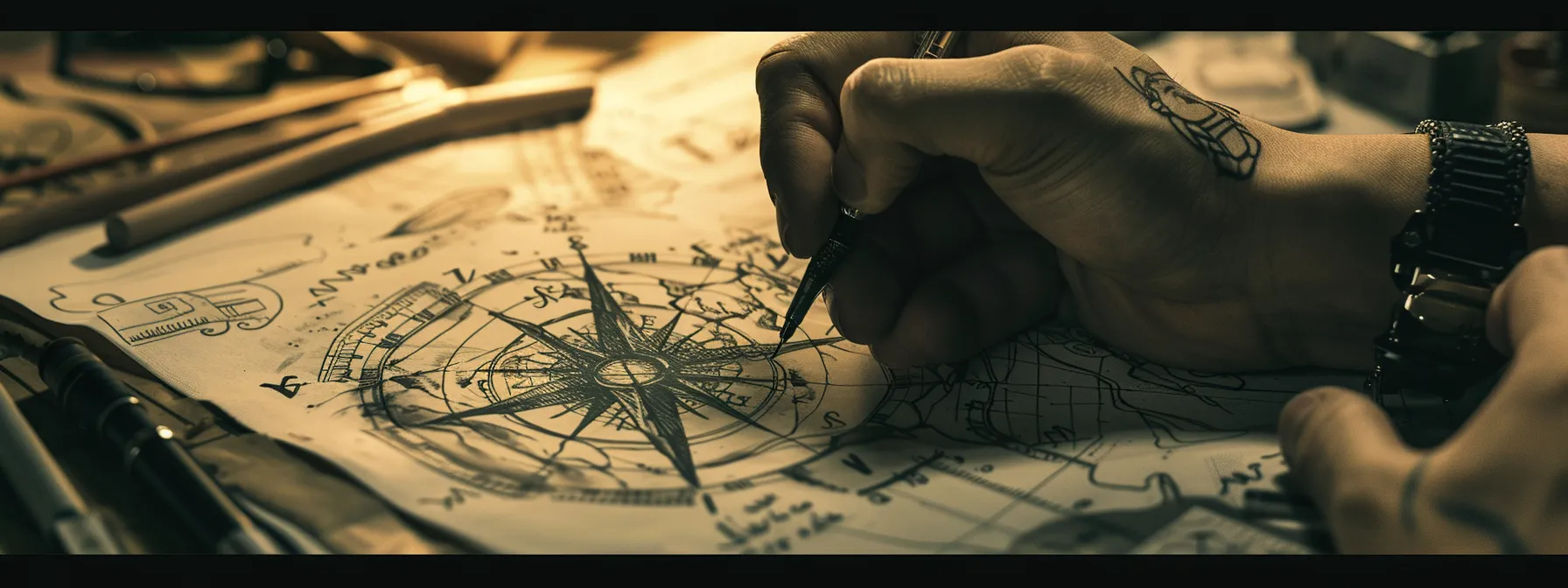
Selecting the right compass tattoo involves careful consideration of design, placement, artist selection, and preparation. This section explores key factors in design choice, the significance of tattoo placement, tips for finding a skilled artist, and essential steps to prepare for the tattooing experience. Understanding these aspects helps ensure a meaningful and satisfying compass tattoo.
Factors to Consider in Design Selection
Selecting the right compass tattoo design requires careful consideration of personal significance, artistic style, and long-term appeal. Individuals should reflect on their reasons for choosing a compass tattoo and how it aligns with their life experiences or aspirations. The design’s complexity, size, and color scheme also play crucial roles in the selection process, as these factors affect both the visual impact and the tattoo’s longevity. Prospective tattoo recipients should research various compass styles, from traditional nautical designs to more abstract interpretations, to find one that resonates with their personal aesthetic and symbolic intent.
Placement Options and Their Significance
The placement of a compass tattoo carries significant meaning and can enhance its symbolism. Popular locations include the forearm, wrist, and back, each offering different levels of visibility and personal significance. The forearm provides a visible canvas for larger designs, while wrist placements offer a subtle reminder of direction. Back tattoos allow for expansive, detailed compass designs, often symbolizing life’s journey. The chosen placement should align with the individual’s comfort level, lifestyle, and the tattoo’s intended message.
Finding a Skilled Tattoo Artist
Finding a skilled tattoo artist is crucial for achieving a high-quality compass tattoo. Prospective clients should research local artists, review their portfolios, and read client testimonials to assess their expertise in creating compass designs. It’s important to choose an artist who specializes in the desired style, whether it’s traditional, minimalist, or highly detailed. A consultation with the chosen artist allows for discussing design ideas, placement options, and any concerns, ensuring a collaborative approach to creating a meaningful and visually appealing compass tattoo.
Preparing for Your Tattoo Experience
Preparing for a compass tattoo experience involves several important steps. Individuals should thoroughly research aftercare procedures, ensuring they understand the healing process and can properly maintain their new tattoo. It’s advisable to avoid alcohol and blood-thinning medications before the appointment, as these can affect bleeding and healing. Clients should arrive at the tattoo studio well-rested, hydrated, and having eaten a balanced meal to ensure comfort during the session. Wearing comfortable, loose-fitting clothing that allows easy access to the tattoo area can also enhance the overall experience.
Compass Tattoos in Modern Tattoo Culture

Compass tattoos remain popular in modern tattoo culture, evolving with current trends and styles. Media and pop culture influences shape design choices, while individual stories add personal significance. This section explores contemporary compass tattoo trends, their cultural influences, and the unique narratives behind personal designs.
Current Trends and Styles
Modern tattoo culture embraces diverse compass designs, blending traditional elements with contemporary aesthetics. Minimalist compass tattoos have gained popularity, featuring clean lines and subtle shading. Geometric compass designs incorporate precise shapes and patterns, appealing to those seeking a modern twist. Watercolor compass tattoos offer a unique artistic approach, with soft, fluid colors creating a dreamy effect. These trends reflect the evolving preferences of tattoo enthusiasts, who seek personalized interpretations of this timeless symbol:
| Trend | Description | Appeal |
|---|---|---|
| Minimalist | Clean lines, subtle shading | Simplicity, elegance |
| Geometric | Precise shapes, patterns | Modern, structured |
| Watercolor | Soft, fluid colors | Artistic, dreamy |
Influences From Media and Pop Culture
Media and pop culture significantly influence compass tattoo designs in modern tattoo culture. Popular movies, TV shows, and music videos featuring compass imagery inspire tattoo enthusiasts to adopt similar styles. Social media platforms like Instagram and Pinterest showcase innovative compass tattoo designs, driving trends and encouraging creative interpretations. Celebrity tattoos often spark interest in specific compass styles, leading to increased demand for similar designs. These influences have contributed to the evolution of compass tattoos, blending traditional symbolism with contemporary aesthetics:
- Movies and TV shows featuring compass imagery
- Social media platforms showcasing innovative designs
- Celebrity tattoos inspiring trends
- Blend of traditional symbolism and contemporary aesthetics
Stories Behind Individual Compass Tattoos
Individual compass tattoos often carry deeply personal stories and meanings. Many wearers choose compass designs to commemorate significant life events, such as overcoming challenges or embarking on new journeys. Some incorporate specific coordinates or dates into their tattoos, marking important locations or moments in their lives. These personalized designs serve as constant reminders of individual growth, resilience, and the paths that have shaped their experiences.
Conclusion
Compass tattoos embody a rich tapestry of symbolism, representing navigation, personal growth, and cultural heritage across diverse traditions. These designs serve as powerful reminders of life’s journey, offering guidance and inspiration to those who wear them. From ancient maritime significance to modern interpretations, compass tattoos continue to evolve, reflecting individual stories and contemporary trends. Ultimately, the enduring appeal of compass tattoos lies in their ability to encapsulate complex meanings in a visually striking form, making them a timeless choice for those seeking meaningful body art.












































































